OUTZainab Masri | Abdullah al-Khatib | Saleh Malas | Khawla Hafezi
With a sarcastic yet fearful attitude, Syrians receive news about the Coronavirus, which is now spreading in the world and reaching to neighboring countries, and other countries to which Syrian borders are still open.
Fears of the disease are reminiscent of other deadly virus outbreaks around the world during the past two decades, such as H1N1, Avian influenza, and SARS. However, the situation is different now in Syria, as medical capabilities have declined, humanitarian crises have aggravated, and control has been unequally spread over governments, affecting the service capacity they may provide.
On the psychological level, reassurances are still being poured out on the Syrians, in an attempt to delay the feeling of the possibility of the virus’s spread in Syria. At the level of practical measures, however, doctors and health professionals in Syria are ringing the alarm and hinting at the need to raise the level of fear and precautions.
In this file, Enab Baladi discusses the possibility of the spread of Corona in Syria, amid the announcement of the first suspected cases of the disease, and sheds light on the measures taken to prevent its outbreak in the three areas of control.
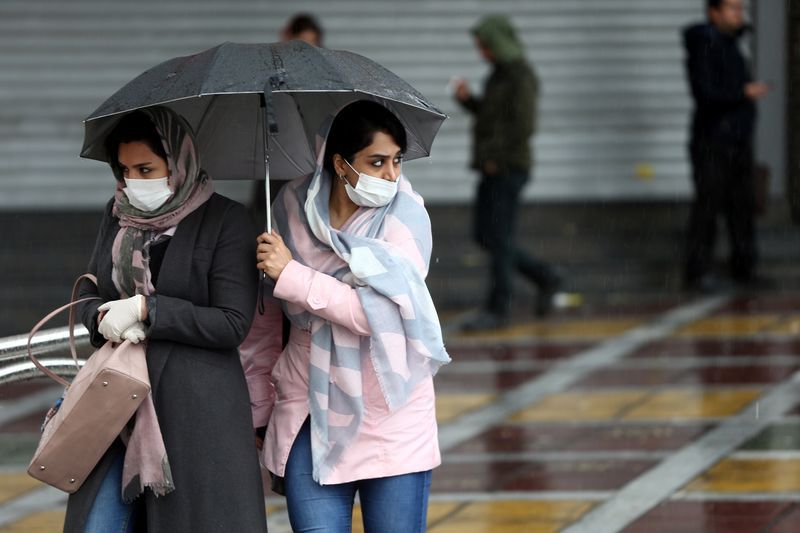
Two women wearing protection masks from the new Coronavirus in the street in Tehran – 25 February 2020 – (Reuters)
Corona knocks Syria’s doors…
What are the possibilities of its spread?
During the revolution years, the Syrian people experienced a war with epidemics, which exacerbated the reality on which a tense military conflict was imposed, as the measles epidemic spread in the northern Syrian regions in 2013, registering the infection of 7,000 people, according to Doctors Without Borders organization, which considered at the time that armed conflicts led to a decline in primary medical care services when the need for these services was at its peak.
In September 2019, a new strain of the Coronavirus (COVID-19) was identified, by investigating the source of the disease by the infection samples taken from the environment at the seafood wholesale market in Wuhan, central China, infecting more than 80,000 people in Chinese provinces, in addition to several cities around the world. Then, reporting about new confirmed cases continued, especially in the Middle East.
The virus that killed more than 2,800 people worldwide so far has started invading Arab countries coming from Iran last week, as the Iranian Ministry of Health began to announce the registration of new infection cases with the new Coronavirus on its territories, which amounted to 245 infected people, 26 of whom died, as published the official Iranian news agency (IRNA), on 27 February.
Towards Syria
The virus arrived in Syria from Iran, amidst the silence of the Syrian regime on the cases that have been declared suspect.
Associate Director of Communicable and Chronic Diseases at the Ministry of Health, Hani al-Lahham, confirmed on 29 February to the local Melody FM radio that two suspected cases from Iran were transferred to al-Mujtahid hospital, were immediately quarantined and were followed up daily, without specifying the date of their arrival.
Al-Laham said that the two cases recovered from the symptoms and that they were discharged from the hospital, without confirming their definite infection by Coronavirus, though they are still followed up even after they left the hospital.
Al-Laham said that any suspected case coming from endemic areas in Iran, showing symptoms, will be referred to hospitals equipped for these cases.
Enab Baladi had contacted a doctor in Damascus, who confirmed the existence of more than one suspected case of infection with Corona in al-Mujtahid Hospital, pointing to a great silence so far on the alleged cases.

Sanitary measures at the border crossings in Syria in the prevention of Coronavirus – February 23, 2020 (SANA)
In neighboring countries
There are Corona cases in countries bordering Syria, which increases fears of the spread of the disease. Lebanon registered the first infection with the emerging Coronavirus, on 21 February, of a Lebanese citizen coming from the city of Qom in central Iran. A week later, Lebanese authorities announced the registration of the second confirmed infection of a Lebanese woman returning to Lebanon on the same plane that carried the first infected person, according to a statement issued by the Lebanese Ministry of Health.
The two women are quarantined in Rafik Hariri University Hospital in the capital Beirut. At the same time, the Lebanese government announced on 25 February, via the Minister of Information, Manal Abdel Samad, the suspension of air flights between Lebanon and all countries where the virus has spread and limiting of trips to essential travels only.
Two days after the statement of Minister Abdel Samad, on 27 February, Lebanon registered the third infection case as confirmed by the Lebanese Ministry of Health.
In Iraq, the number of infected cases increased to six people across the country, all of whom arrived through Iran, according to a statement issued by the Ministry of Health in Baghdad on its official website. The statement reported the infection of an Iranian student in Najaf Governorate, south of the capital, in addition to the epidemic of a young Iraqi man and four individuals from one family, which was recently coming from Tehran to the northern Iraqi governorate of Kirkuk.
The number of infected people with the virus in Kirkuk Governorate, in northern Iraq, increased to seven cases on 27 February, according to Anadolu Agency.
Following these infections, the Iraqi authorities suspended study in universities and schools and banned public gatherings, in addition to prohibiting citizens from traveling to seven countries, namely, South Korea, China, Thailand, Singapore, Iran, Kuwait, and Bahrain.
The Iraqi authorities have excluded from this ban both foreign delegations and subtle bodies.
The Iraqi government also took preventive measures in the Chinese oil companies, including the postponement of the arrival of Chinese workers enjoying their holidays to Iraq, according to the Iraqi News Agency (INA).
All of the precautionary measures that Iran implemented, including the suspension of study in universities and schools, banning Chinese people’s entry to it, and the formation of medical teams to spray means of transport with antiseptics and provide face masks, did not prevent the virus from reaching the country’s officials such as the Iranian Deputy Minister of Health, Iraj Harirchi, the head of Iranian Parliament’s National Security and Foreign Policy Committee, Mujtaba ZulNour, and the Iranian Vice President for Women’s Affairs, Masoumeh Ebtekar.
| What is Corona?
Coronaviruses are a large group of viruses that may cause disease to animals and humans. A number of the virus’s strains in humans cause respiratory infections, the severity of which ranges from common colds to more severe diseases such as Middle East Respiratory Syndrome and Severe Acute Respiratory Syndrome (SARS). The newly discovered Coronavirus causes COVID-19 disease. COVID-19 is an infectious disease caused by the newly discovered Coronavirus, and there was no knowledge of the existence of this new virus before its outbreak in Wuhan, China, in September 2019. Source: World Health Organization |
| How does it spread?
People can be infected with COVID-19 through other people who carry the virus. The disease can be transmitted from one person to another through small droplets that come out of the nose or mouth when the infected person coughs or sneezes. These droplets fall on the objects and surfaces surrounding the person. Other people can then get infected when they touch these objects or surfaces and then touch their eyes, nose, or mouth. People can also get infected if they breathe the droplets that come out of the infected person when he coughs or exhales air. It is, therefore, essential to stay more than one meter (three feet) away from the infected person. |

Iranian women committed to the precautionary measures against the spread of the Coronavirus in Iran – 22 February 2020 – (Anadolu Agency)
Unregulated Weekly flights and land crossings
How can the Coronavirus enter Syria?
Three Syrian airlines fly to and from Syria, and flights reach three civil airports today, which are the Damascus International Airport in the Syrian capital, Bassel al-Assad Airport in Latakia Governorate, and Qamishli International Airport.
Recently, Aleppo International Airport has resumed its activities after the Syrian regime forces took control of the entire city of Aleppo in northern Syria. In contrast, flights from Iran to Aleppo have not been announced yet.
Civil flights arrive from Tehran to Syria, at the rate of three flights per week, according to Airportia, a website specialized in monitoring civil aviation and airlines.
Iranian and Iraqi visitors enter Syria from the al-Bukamal border crossing with Iraq, in Deir ez-Zor Governorate, periodically, heading to Shiite shrines in Syria.
Iranian and Iraqi fighters enter intermittently from an irregular crossing next to al-Bukamal to support the militias affiliated to the Syrian regime, which Enab Baladi highlighted in a previous investigation entitled Al-Bukamal … Iranian foot on the Mediterranean Road.
Director of the local council in the city of al-Bab in the eastern countryside of Aleppo, Dr. Kazem al-Hammoud told Enab Baladi that controlling the entry and exit traffic through these crossings is a priority that necessitates organizing it and identifying of the people who use it, especially those coming from the areas controlled by the regime forces.
As part of its project to monopolize the educational sector in Syria, especially in Deir ez-Zor, Iran periodically receives Ph.D. researchers and teachers from the Euphrates University to “exchange experiences and knowledge,” according to local reports.
With the Syrian regime forces controlling al-Bukamal, with extensive ground support by Iranian militias at the end of 2017, the latter increased their military deployment in al-Bukamal.
Iranian militias were stationed in the city, which links Syrian lands to Iraq through the al-Bukamal-al-Qaim border crossing.
Militias are currently active in setting up centers for the so-called Imam al-Mahdi Scouts, which target children and train them in military units, in addition to teaching them Hussainia doctrine classes.
The exit and entry movement to and from Syria is also active at two border crossings with Lebanon, which has recorded three cases so far infected with the Coronavirus, where the Jdeidat Yabous and al-Darbasiyah border crossings witness a permanent entering and leaving traffic.
The Semalka crossing links Syria with several cities in the Kurdistan region of Iraq and is considered one of the most crucial northern border crossings in terms of activity. This means that cases of infection with the virus can reach Syria through it, especially as the governorates in north Iraq witness a high rate of infection with the illness such as Kirkuk Governorate.
The virus can also reach Syria through Jordan, which has not yet registered confirmed cases of infection. Thus, the virus can spread through the Nassib border crossing in southern Syria.
From the north, Syria and Turkey are connected with two crossings that witness an active entering and leaving traffic to and from Syria, which are Bab al-Hawa and Bab al-Salam crossings.
Weak health structure and medical personnel lacking a culture of prevention
How is Coronavirus detected in areas under regime control?
Until 29 February, the Ministry of Health in the Syrian regime government denied recording any infection with the new Coronavirus inside its territory, before announcing “the recovery of suspected cases,” and both the Interim government and Autonomous Administration of North and East Syria (NES) denied the presence of infections. However, the Syrians’ concerns about the spread of the disease to the country are on the rise.
Laboratory in Cairo
The Ministry of Health of the Syrian regime government indicated, in a statement issued on 22 February, that “teams of experts are working to detect the disease,” noting that it has provided a “reference laboratory” which is equipped with all the necessary diagnostic tools to deal with any suspected case. Thus, rheumatologist Houssam al-Ahmad, who is located in Aleppo, said that the Syrian hospitals to are not equipped enough to perform the required analyzes in order to detect infection with the new Coronavirus, or even to distinguish it from the Middle East Respiratory Syndrome Coronavirus, which had previously spread in Saudi Arabia in 2012.
Al-Ahmad explained to Enab Baladi that if a region of Syria is suspected of having cases of infection, a nasal and pharynx swab and a blood sample must be taken from the potential carrier of the disease. These samples are sent to the capital, and from Damascus, it is re-sent to a private laboratory affiliated to the World Health Organization (WHO) in Cairo.
The process of sending samples and obtaining results takes from 10 to 12 days, at least. Al-Ahmad justified the length of the procedure by saying that there are no flights from Syria to Egypt daily, indicating that many samples, to detect the “swine flu” or “bird flu,”‘ for example, were also sent to Egypt before 2011.
The Deputy Director of Communicable and Chronic Diseases at the Ministry of Health, Dr. Hani al-Laham, said on 29 February that the “virus test kits” are available in Syria and are currently used to conduct the tests, noting that the test results are obtained within 24 hours, instead of sending samples abroad.
No full preparations
Enab Baladi contacted a doctor working in one of the hospitals in the city of Aleppo, which is under the control of the Syrian regime, who spoke on the condition of anonymity for security reasons. The doctor referred to the absence of preparations in public hospitals to deal with the virus, and the lack of a culture of prevention among medical personnel working in Health centers located within the city, in addition to the absence of awareness programs about COVID-19.
Primary health care official in the Idlib Health Directorate, Anas al-Dagheem, indicated that in Idlib, which is under the control of the opposition factions, and in light of the “almost complete” lack of medical centers and the shortage of medical equipment in the area, due to the attacks carried out by the regime and its ally Russia, medical personnel are preparing to confront the potential outbreak of infections by providing preliminary checks to roughly diagnose the disease, then transfer the laboratory samples to Turkey for final confirmation, reported Enab Baladi.
Al-Dagheem added that the directorate is distributing informative flyers and providing area’s hospitals with precise data about the disease.
He believed that the residents of the governorate are “somewhat safe” because of the difficulty of access from the affected countries to the province so far. Al-Dagheem added that the Idlib Health Directorate had equipped isolation rooms in some hospitals with some antiviral and primary treatments that are “not sufficiently available.”
According to a poll conducted by Enab Baladi on its Facebook page, most of the respondents agreed that government institutions in Syria are not ready to deal with the new Coronavirus.
94 percent of the 2600 respondents considered that the country is suffering from a deteriorating health system that lacks humanitarian needs, while 6 percent of them said that government health facilities are ready to confront the virus.
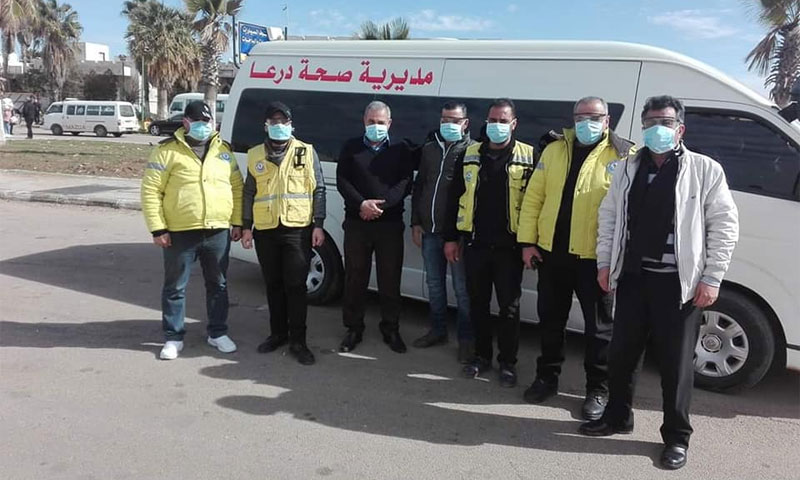
Mobile clinic placed by the Syrian Health Directorate at the Nassib border crossing with Jordan – 28 January (Daraa Health Directorate Facebook)
Various precautionary measures… Rushing to deny infection cases
Syrian medical sources, close to the parties to the conflict, have rushed to deny the presence of infections with the new Coronavirus in the areas under the control of both warring sides.
On 28 January, the Health Directorate in Latakia Governorate denied the registration of new cases of Coronaviruses in the governorate hospitals. Meanwhile, the national hospital was working on isolating people with influenza, until confirming that they are not infected with Coronavirus.
Dr. Samer Khidr, the General Director of Damascus Hospital (al-Mujtahid), concealed the viral infection outbreaks in the hospital after news spread on social media about confirmed cases until the Ministry of Health confirmed the suspicion.
A hospital dedicated to Corona cases
As for measures taken by the Ministry of Health within the Syrian regime and its departments, Hazar Raef, the Damascus Health department Director, confirmed that from the first day after the confirmed case of Coronaviruses in China, the Ministry has set up an emergency committee (detection team) through the health departments according to their geographic distribution and proximity to the border crossing points.
The committee’s task is to examine arrivals from Syria from border crossings and airports, such as the “Jdeidet Yabous” (Masnaa) border crossing with Lebanon and “Damascus International Airport.” The committees were provided with all the requirements for prevention as smart thermometers, in addition to organizing training sessions for all teams and giving lectures and workshops on how to deal with upcoming cases.
According to Raef, the sanitary procedures taken at the crossing points are applied to all arrivals in Syria from different countries and, in particular, from China and the countries of East Asia. Then, forms are filled in after examining them at the airport or the land crossing point. These forms contain their names, phone numbers, place of residence, besides monitoring their health condition and compelling them to communicate with a specialized medical team, for 14 days, which represents the incubation period of the virus.
The mechanism for screening and checking people at airports and crossings was not clarified, and it was not confirmed that all arrivals underwent a specific medical examination.
Meanwhile, the ministry is studying the possibility of transforming the “al-Dawir isolation center” in Damascus into a hospital treating the “corona” cases. According to the deputy director of infectious and chronic diseases at the Ministry of Health, Dr. Hani Al-Laham, the hospital is currently equipped with some necessary tools.

The Minister of Health of the Syrian regime government inspecting the work of the epidemiological investigation teams for the “Corona emerging” virus at Damascus Airport – 25 February 2020 – (Syrian Ministry of Health – Facebook)
Turkish consultation
Medical sources in northern Syria have denied having an “emerging Coronavirus” infection. Meanwhile, the “Syrian Interim Government” has stopped the importation of Chinese goods into areas under the control of opposing parties, to ensure the safety of the people in the “liberated” Syrian regions.
- Kazem al-Hamoud, the local council health director in the city of al-Bab, told Enab Baladi coordination was underway with the Turkish side regarding the virus, as the spread of the disease in one of the two countries will directly threaten the other.
In addition to the presence of a consultant on the Turkish side, who takes part in all the measures taken by the Direction, indicating the presence of the equipped executives, there is a “large number” of medical centers, and a place dedicated to the isolation of contamination in case of occurrence. Besides, a group including a large number of doctors called upon to report any suspected condition, until samples are taken and that the analyses are carried out to confirm cases.
The directorate is working on the organization of a health awareness symposium on the Coronavirus, for which the invitation will be public. The symposium aims at sensitizing a large number of citizens, “after the circulation of fake news about the existence of infections in the city of al-Bab.”
According to al-Hamoud, the local council is also seeking to broadcast awareness campaigns through social media; in addition, a large number of “WhatsApp” groups have been publishing posts to reach a large number of people to prevent the spread of the disease.
According to the report of the World Health Organization, a management team is supporting the health situation in Syria, in eight ways; most importantly, the detection of epidemics and prevalent diseases and prevention. Low vaccination rates in some conflict areas, in addition to the collapse of water, sanitation systems, and malnutrition hotspots, may lead to the spread of more deadly diseases in Syria.
Medical aid stations
The “Self-Administration” of northeastern Syria decided to close the “Semalka” border crossing with the Kurdistan region in Iraq. On 27 February, the Executive Council of the Department posted a statement on its Facebook account, announcing the closure of the Semalka border crossing with the Kurdistan region of Iraq on 3 March.
The statement announced that the closure is due to the precautionary measures taken by self-administration (Kurdish) to prevent the spread of the Coronavirus (Covid-19) in the region and Iraq.
The statement added that the closure of the crossing would remain until the total control and elimination of the virus. It will be reopened by a decision of the “Executive Council of the Autonomous Administration of North and East Syria.”
During the past few days, the “Self-Administration” has taken measures to detect Coronavirus. On 26 February, the joint administration chief of the “Health Authority,” Joan Mustafa, confirmed to the official Hawar News Agency, that several measures had been taken to maintain the security and safety of citizens in the areas of “Self-Administration.”
Mustafa added: “We have opened medical points at the border crossings of the administration areas, and equipped them with examination devices for all arrivals to the regions of northeastern Syria to remotely measure temperature.
He explained that if the contamination is suspected, the infected person is isolated in locations dedicated to such cases.

An ambulance as part of the treatment for people infected with Coronavirus in China, 6 February 2020 – (Anadolu Agency)
An ambulance as part of the treatment for people infected with Coronavirus in China, 6 February 2020 – (Anadolu Agency)
Wuhan again… but it is “worse”
What is the danger of the spread of Corona inside Syria?
If the Coronavirus arrives in Syria in general, and the opposition-controlled areas in particular, the situation will be worse than it is in the Chinese city of Wuhan, which is considered the incubator of the epidemic, due to the weakness of the health system and the large population density, as the coordinator of the Early Warning and Response Network For outbreaks in northern Syria, Muhammad al-Saleh, stated to Enab Baladi.
In case it reaches the displacement camps in northern Syria, whether eastern (in the governorates of Hasakah and Raqqa) or western (in the north countryside of Aleppo and Idlib), it is expected that there will be more and faster epidemiological cases than others, as they are overcrowded places, especially if they do not have sufficient preventive measures, according to al-Saleh.
From November 2019 to 23 February, 177,078 families (1.93 million people) have been displaced in northwestern Syria, including 844,763 displaced and forcibly displaced people, according to the report.
North-eastern Syria contains 1.27 million displaced people, distributed in camps, the most prominent of which is the al-Houl camp that includes more than 69,000 refugees, including people who suffer from chronic diseases, and part of them are pregnant or lactating women.
Al-Saleh talked to Enab Baladi about the tragic situation of those living in these camps in all areas (sanitation, hygiene, attention, overpopulation, standard services), which makes it, in terms of health, more dangerous than other places in Syria.
Al-Saleh explained that the infection with the virus does not always mean that the result is tragic. Still, many middle-aged patients with a healthy body structure recover without complications, which is the most significant percentage in those infected with the newly discovered Coronavirus, as is the case with influenza patients.
Al-Saleh believes that the psychological factor and the fear of disease is the “first killer.” So far, the mortality rate due to the emerging Coronavirus has not passed the rate resulted from influenza viruses (H1N1, Avian influenza), considering that this case is not for reassurance but rather a medical reality.
Despite the World Health Organization’s assistance in confronting the emerging Coronavirus, and its support to developing countries by providing them with preventive medical devices, it has so far not offered any such support to the Early Warning and Response Network For epidemics or opposition-controlled areas, according to al-Saleh. Nevertheless, planning in the coming period would be productive regarding laboratory diagnostic training and the discussion of hospitals that will contain isolation and intensive care points (quarantine).
if you think the article contain wrong information or you have additional details Send Correction
النسخة العربية من المقال
-
Follow us :
Most viewed
- 311 casualties among government forces and civilians in Syrian coast
- Rights organization documents government and civilian deaths in Syrian coast
- Al-Shibani: Syria is facing a hidden and declared war
- Ankara supports Damascus... Moscow abdicates responsibility for events in coastal region
- Syrian Defense Ministry appoints "Abu Amsha" as Hama Brigade commander












 Iranian women committed to the precautionary measures against the spread of the Coronavirus in Iran - 22 February 2020 (Anadolu Agency)
Iranian women committed to the precautionary measures against the spread of the Coronavirus in Iran - 22 February 2020 (Anadolu Agency)





 A
A
A
A
A
A


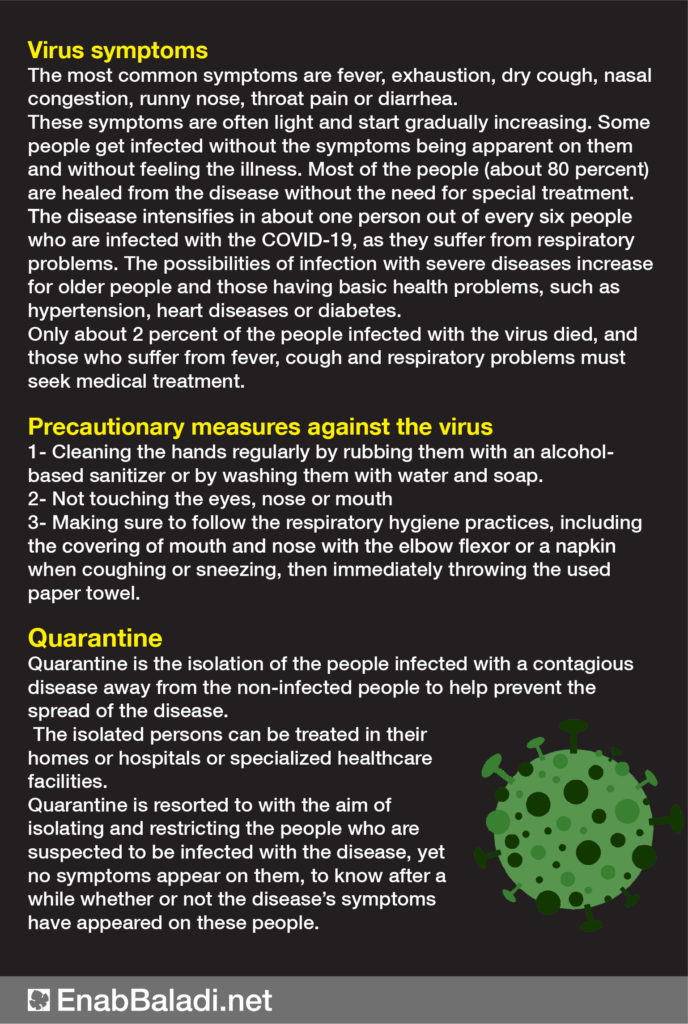



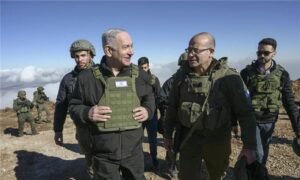
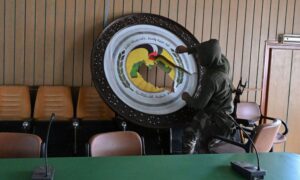
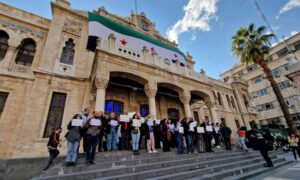
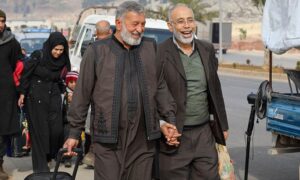
 More In-Depth
More In-Depth